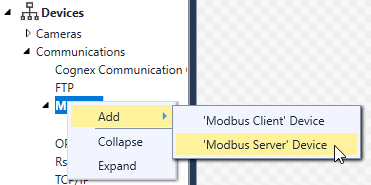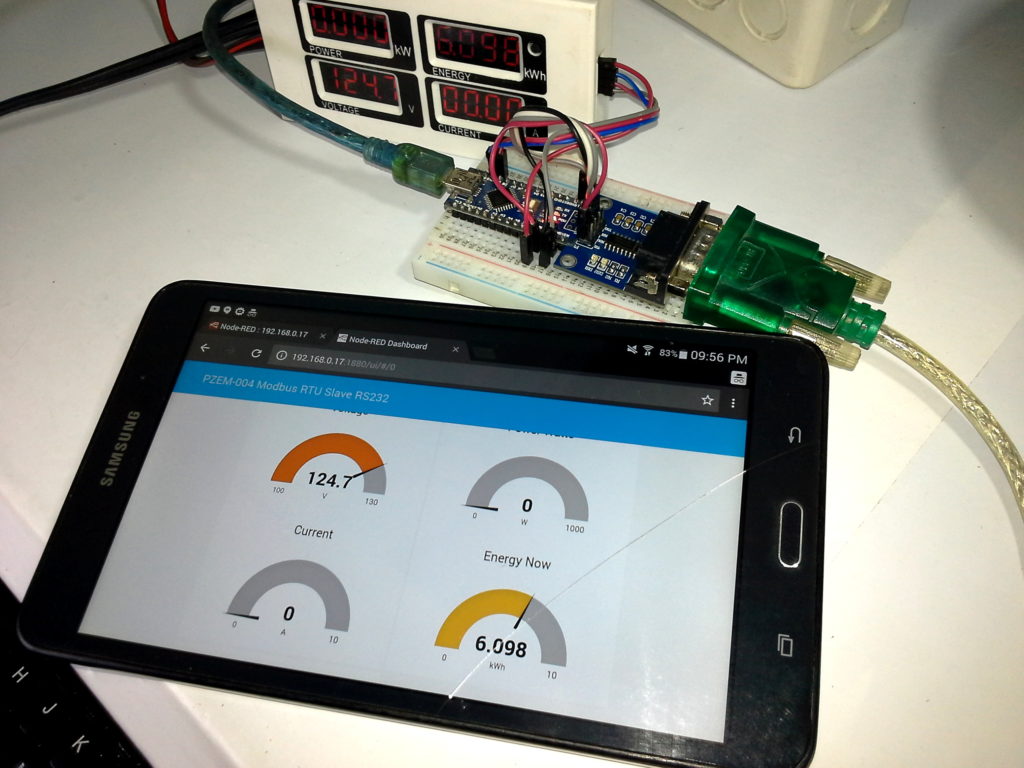

#Modbus server and device not communication code#
This must be imported into the code to be used. In an Allen Bradley PLC, such as the Compact or ControlLogix series, an Add-On Instruction (AOI) for Modbus is available from Rockwell Automation for Modbus TCP transactions. No explanation is complete without a couple of examples as to how this might look. She or he must know: the device address (not called a node anymore, but the same thing), the function code, the starting address, and the length (if multiple). The IP address is usually able to be changed with external software, or sometimes by means of DIP switches embedded in the device. It can even be on the same network as the rest of the Ethernet devices, as long as the network parameters can be configured properly (the IP address, subnet mask, etc). This means that an Ethernet port can be used as the physical connection for a Modbus TCP device.


However, in the TCP structure, the network communication is handled using industry-standard industrial Ethernet messaging. Not to sound redundant, but the programmer once again only needs to know those same basic elements as before. In summary, all the programmer needs to know for both RTU and ASCII is the node #, function code, starting address, and length (if multiple). In the Modbus ASCII system, the same data is provided as for the Modbus RTU, except rather than using binary equivalents of the function codes, it uses the ASCII equivalents.Īgain, the good news is that all the programmer needs to understand is whether the device is programmed for Modbus RTU or ASCII, and choose the appropriate format from a list. When you press buttons on a keyboard, each letter, number, and character is given a special standardized code. In RTU, all data is formatted as binary equivalents of the decimal codes, but the good news is that the programmer usually doesn’t need to know or care about how it does this. Node # (since RS-232 and 485 networks are defined by nodes), the function code, the starting address, and the ending address. Modbus for remote terminal units (RTU) is a method of structuring a data packet so that the data transmission includes the following pieces: This provides a lot of flexibility and customization over which terminals are accessible easily from other devices. Some controllers allow you to choose the Modbus address for each I/O terminal manually. The same goes for writing or reading, and for discrete and word information. Function code 15, starting address 0, now with a length of 3.If you wish to turn on the first three digital outputs, the structure would look like this: Therefore, if you wish to energize that output, you must use the following structure: When a Modbus device is manufactured, each terminal or task (for example, the first digital output of a remote I/O terminal, or maybe the stop command for a VFD) will have the built-in address of 0. The only other factor that must be identified in order to share information is the address of a contact, coil, or register. The complete list of available function codes for Modbus I/O commands is the following: Description Note that you cannot write to an input contact - only the real-world device (button, sensor) has the ability to write itself. So the slightly elaborated list of possible Modbus functions includes: In slightly longer detail, those words are called ‘registers’, and those ‘bits’ may be output coils or input contacts. Read words (usually words are 16-bit integers).In short, there are 4 things we can do with Modbus: There is a small selection of codes used to identify what type of information we want to use, and what task we wish to perform. Therefore, if we wish to share information with I/O devices, it would seem logical to assume that all we must determine is whether the information is discrete or analog, and whether we are reading or writing the information. I/O and data exist as either discrete (boolean) or multi-bit words (as integers or floating-point values). Modbus TCP takes advantage of common standards, while still maintaining a simplified code function code and address structure. On the other hand, perhaps it is useful to adopt standardized protocols to some limited extent in order to take advantage of the many sockets and plugs that exist in modern equipment, such as Ethernet ports.įigure 1. It is neither necessary nor beneficial to rely on protocols that require massive packets of configuration data when only simple data transmissions are requested. Modbus is a communication protocol commonly used with input/output (I/O) data to share information at this simple device network level.


 0 kommentar(er)
0 kommentar(er)
